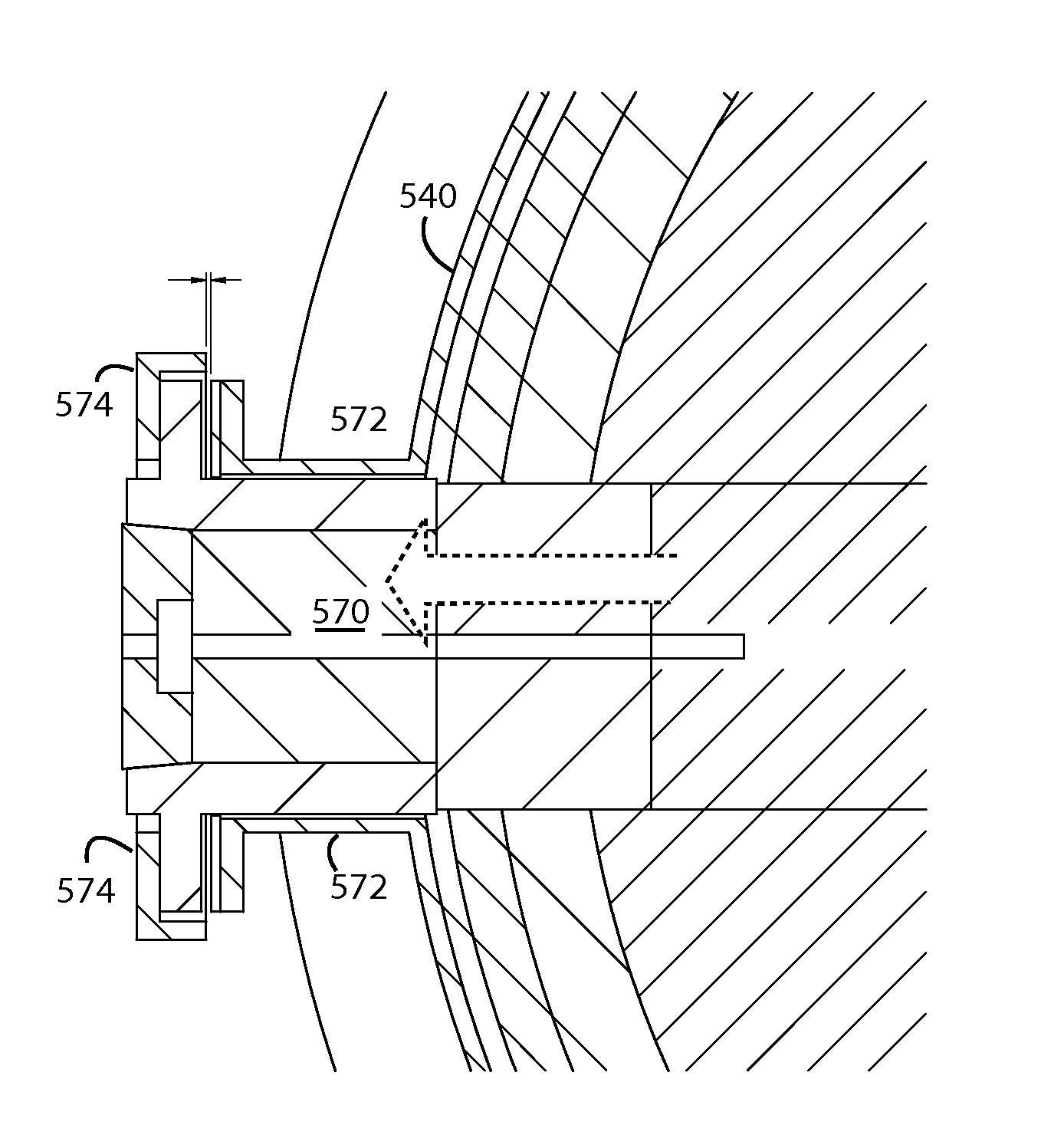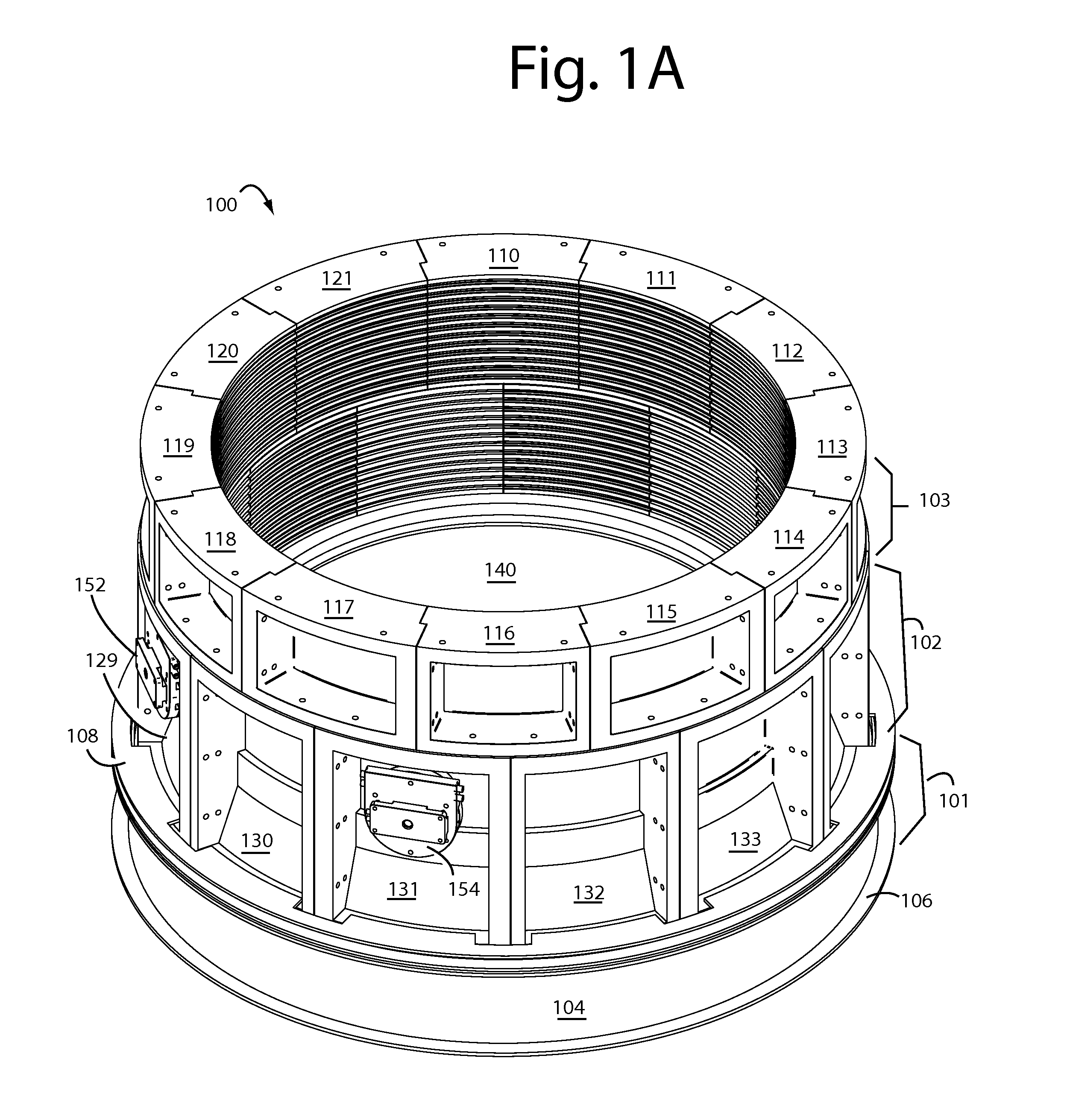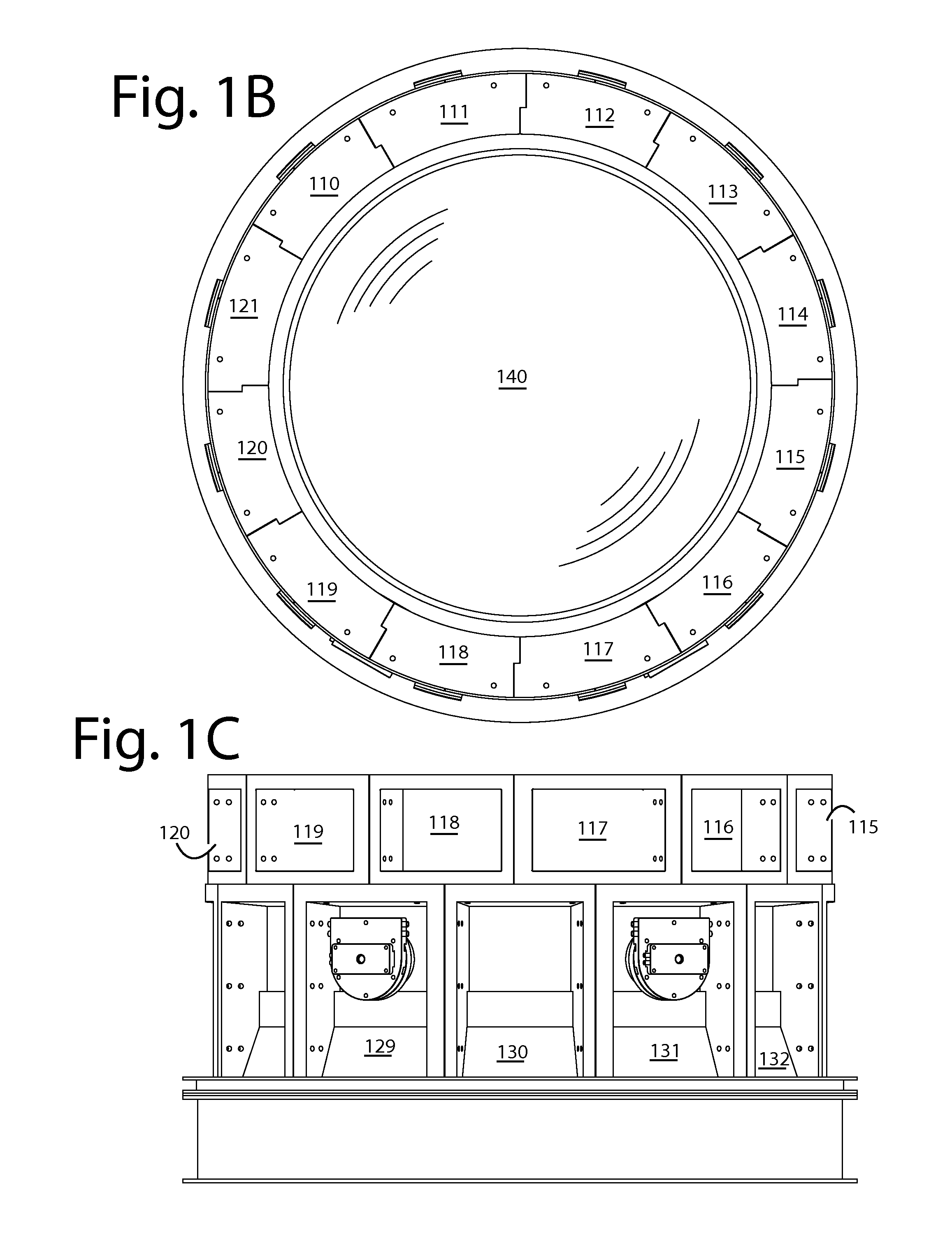Furnace refractory brick hearth tap hole
a technology of refractory bricks and tap holes, which is applied in the direction of furnaces, charge manipulation, manufacturing converters, etc., can solve the problems of limited growth, high cost of containment shells of these kinds, and many expensive and complex ways devised. , to achieve the effect of optimal working pressure and avoiding leakage formation
- Summary
- Abstract
- Description
- Claims
- Application Information
AI Technical Summary
Benefits of technology
Problems solved by technology
Method used
Image
Examples
Embodiment Construction
[0024]Embodiments of the present invention do not rely on a full containment shell to provide the hoop strength and leverage necessary to compress the brick hearth in a furnace refractory. The coolers themselves are cast as segments of a ring that can be stacked in tiers, and then interconnected with springs and bolts through flanges on their outer perimeters to form an elastic hoop. The assembled coolers and adjustments provide the substantial inward compressive forces required to keep the gaps and joints closed in the brick hearth and walls that line the innards.
[0025]FIGS. 1A-1D represent an elastically interconnected cooler compressed hearth embodiment of the present invention, and is referred to herein by the general reference numeral 100. Hearth 100 comprises a bottom section 101 on which a first tier 102 and a second tier 103 of segmented coolers are assembled into rings and stacked. A base 104 is provided with a footer flange 106. A hold-down ring 108 is used to clamp the fi...
PUM
| Property | Measurement | Unit |
|---|---|---|
| diameter | aaaaa | aaaaa |
| pressures | aaaaa | aaaaa |
| refractory | aaaaa | aaaaa |
Abstract
Description
Claims
Application Information
 Login to View More
Login to View More - R&D
- Intellectual Property
- Life Sciences
- Materials
- Tech Scout
- Unparalleled Data Quality
- Higher Quality Content
- 60% Fewer Hallucinations
Browse by: Latest US Patents, China's latest patents, Technical Efficacy Thesaurus, Application Domain, Technology Topic, Popular Technical Reports.
© 2025 PatSnap. All rights reserved.Legal|Privacy policy|Modern Slavery Act Transparency Statement|Sitemap|About US| Contact US: help@patsnap.com



